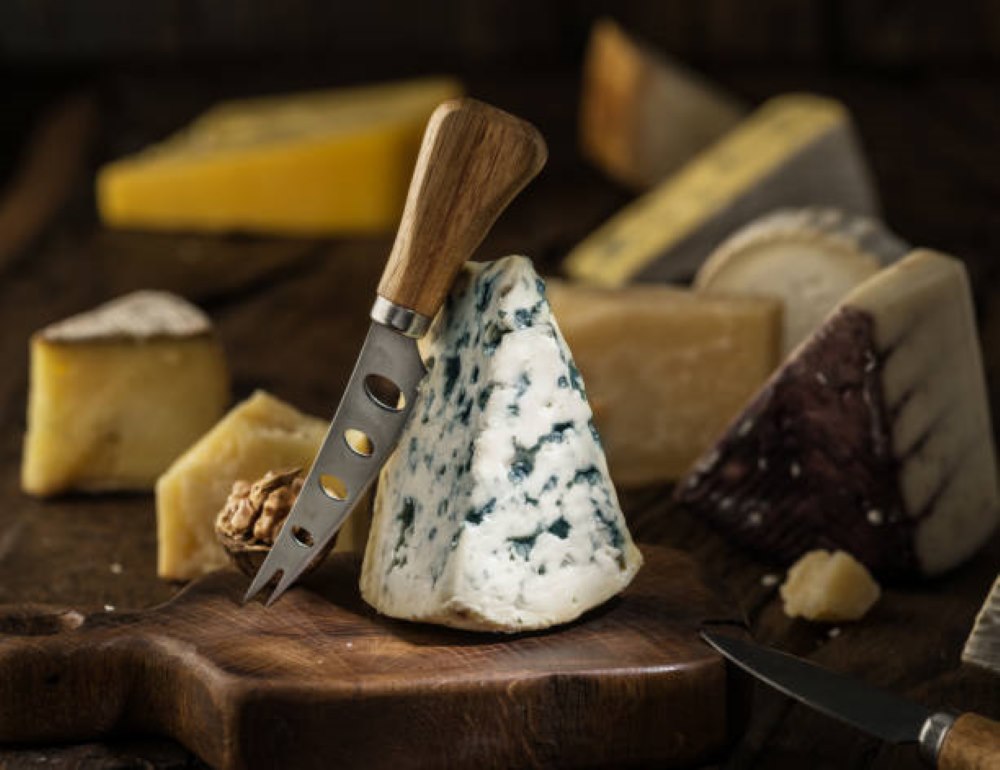A Journey Through Blue Cheese Varieties, Flavors, and Traditions
Blue cheese, with its distinctive veining and bold flavors, stands as a testament to centuries of cheese-making tradition.
From the crumbly and pungent Roquefort to the creamy and tangy Gorgonzola, each variety offers a unique sensory experience that delights cheese connoisseurs around the world.
Join us as we embark on a flavorful journey through the diverse world of blue cheese, discovering the rich history, craftsmanship, and innovation behind these beloved cheeses.
The Origins of Blue Cheese
Blue cheese has a storied history dating back thousands of years. Legend has it that the discovery of blue cheese was accidental, with early cheese-makers noticing blue-green mold developing in their aging cheeses.
Over time, this mold was identified as Penicillium roqueforti, a type of mold that thrives in the cool, damp conditions of cheese caves. The development of blue cheese was a testament to the ingenuity of cheese-makers, who learned to embrace the unique flavors and textures created by this natural process.
Traditional Blue Cheeses
a. Roquefort
Hailing from the caves of southern France, Roquefort is often considered the king of blue cheeses. Made from raw sheep’s milk and aged in limestone caves, Roquefort boasts a crumbly texture and bold, salty flavor with notes of earthiness and tanginess.
Protected by AOC (Appellation d’Origine Contrôlée) designation, Roquefort sets the standard for quality and authenticity in blue cheese.
b. Gorgonzola
Originating from Italy, Gorgonzola is a creamy and tangy blue cheese with a rich history dating back to the Middle Ages.
Made from cow’s milk and aged for several months, Gorgonzola develops a velvety texture and complex flavor profile, ranging from mild and buttery to sharp and spicy. Its distinctive blue-green veins add visual intrigue to cheese boards and culinary creations.
c. Stilton
A British classic, Stilton is known for its crumbly texture and robust flavor profile. Made from pasteurized cow’s milk and aged for a minimum of nine weeks, Stilton exhibits a creamy mouthfeel and balanced blend of sweet and tangy notes.
Protected by PDO (Protected Designation of Origin) status, Stilton is a beloved addition to cheese platters and recipes alike.
Unique Blue Cheese Varieties
a. Blue Marble Jack Cheese
Combining the creamy texture of Monterey Jack with the bold flavors of blue cheese, Blue Marble Jack Cheese offers a unique twist on traditional blue cheese varieties.
With its marbled appearance and mild yet tangy flavor profile, Blue Marble Jack Cheese adds a playful touch to sandwiches, salads, and cheese plates.
b. Gorgonzola Dolce
Originating from Italy, Gorgonzola Dolce is a creamy and luxurious blue cheese known for its rich, buttery texture and delicate blue veining.
Unlike its sharper counterpart, Gorgonzola Piccante, Gorgonzola Dolce boasts a milder flavor profile with subtle hints of sweetness, making it a versatile ingredient in both savory and sweet dishes.
Whether crumbled over a pear and walnut salad or spread onto a crusty baguette, Gorgonzola Dolce offers a decadent experience for cheese connoisseurs.
The Art of Blue Cheese-Making
The production of blue cheese is a delicate art that requires skill, patience, and attention to detail.
From milk selection and pasteurization to curd formation and aging, each step in the cheese-making process influences the final flavor and texture of the cheese. Blue cheese-makers carefully inoculate their cheeses with Penicillium roqueforti spores, allowing them to develop the characteristic blue veins that give the cheese its name.
The cheeses are then aged in carefully controlled environments, such as caves or aging rooms, where they undergo a transformation of flavors and textures over time.
Pairing Blue Cheese with Accompaniments
Blue cheese’s bold flavors and creamy textures make it a versatile ingredient in both savory and sweet dishes.
When pairing blue cheese with accompaniments, consider complementary flavors and textures that enhance the cheese’s natural characteristics. For savory pairings, try serving blue cheese with nuts, honey, or cured meats like prosciutto.
For sweet pairings, experiment with fruits like pears, figs, or grapes, as well as sweet spreads like fig jam or honey.
The Global Influence of Blue Cheese
Blue cheese’s popularity extends far beyond its European origins, with cheese-makers around the world putting their own unique spin on this beloved cheese variety.
From artisanal creameries in the United States to dairy farms in Australia and New Zealand, blue cheese-makers draw inspiration from traditional recipes while incorporating local ingredients and techniques to create distinctive blue cheeses that reflect their regional terroir.
Innovations in Blue Cheese-Making
As consumer tastes evolve and culinary trends shift, blue cheese-makers continue to innovate and experiment with new flavors, textures, and techniques.
From smoked blue cheeses to blue cheese-infused spreads and dips, the world of blue cheese is ripe with creative possibilities.
Cheese-lovers can expect to see new and exciting blue cheese varieties hitting the market as cheese-makers push the boundaries of tradition and embrace the spirit of experimentation.
The Bottom Line
The world of blue cheese is as diverse and dynamic as the flavors and textures it encompasses. From the time-honored traditions of Roquefort, Gorgonzola, and Stilton to the innovative creations of modern cheese-makers, blue cheese continues to captivate and inspire cheese enthusiasts around the globe. So, whether you’re a seasoned cheese aficionado or a curious newcomer, be sure to explore the world of blue cheese and savor the rich tapestry of flavors, textures, and traditions it has to offer.







